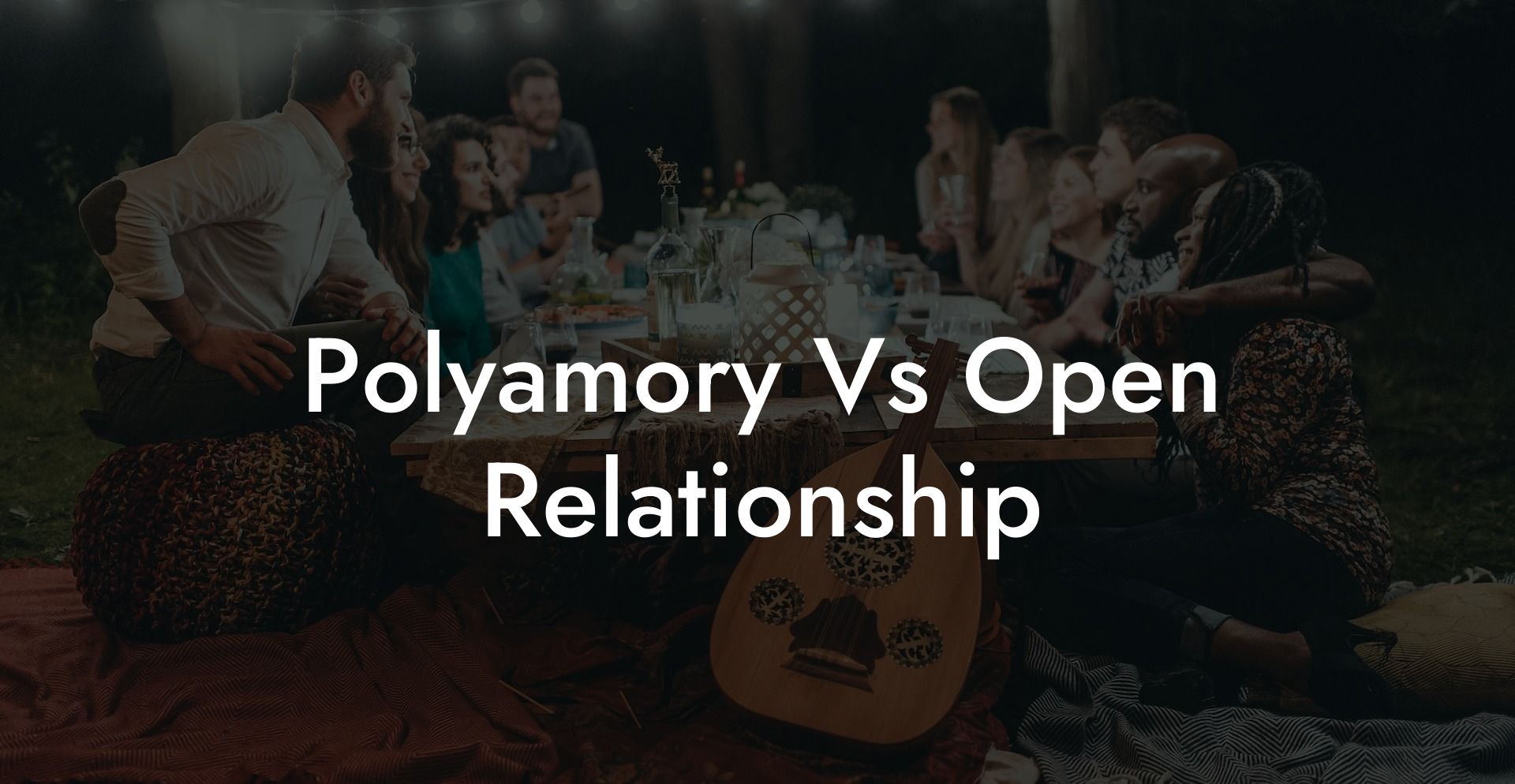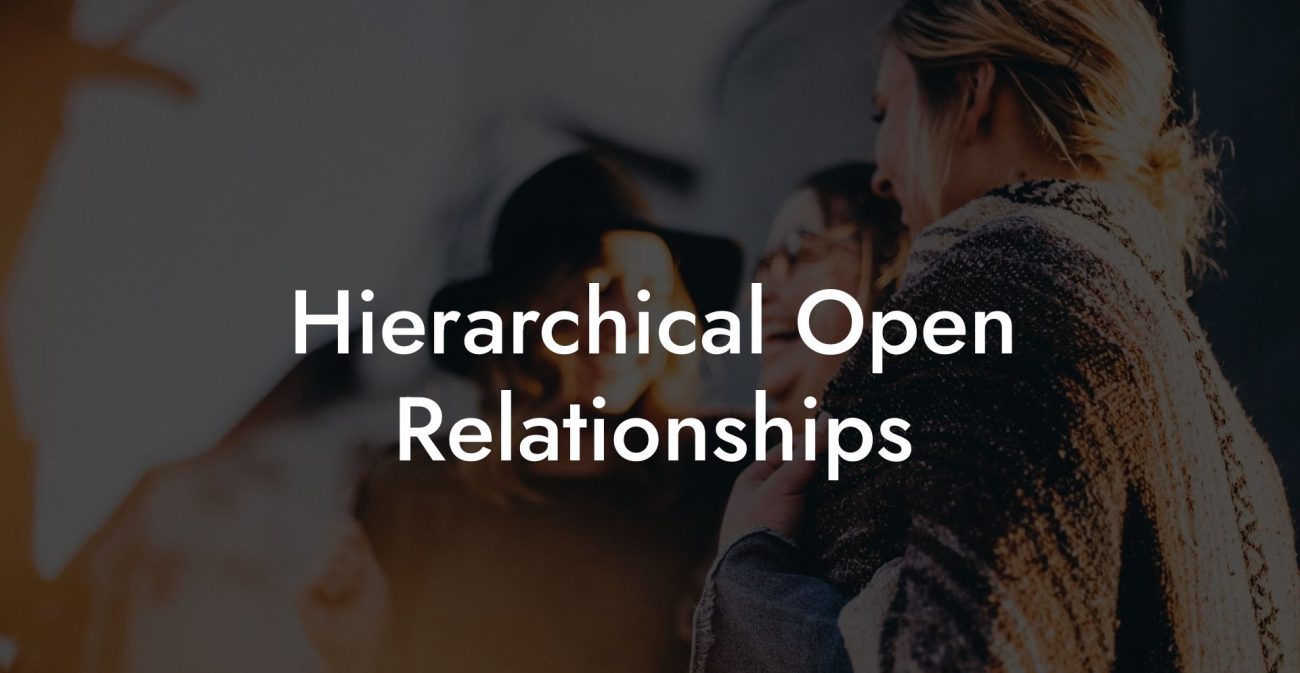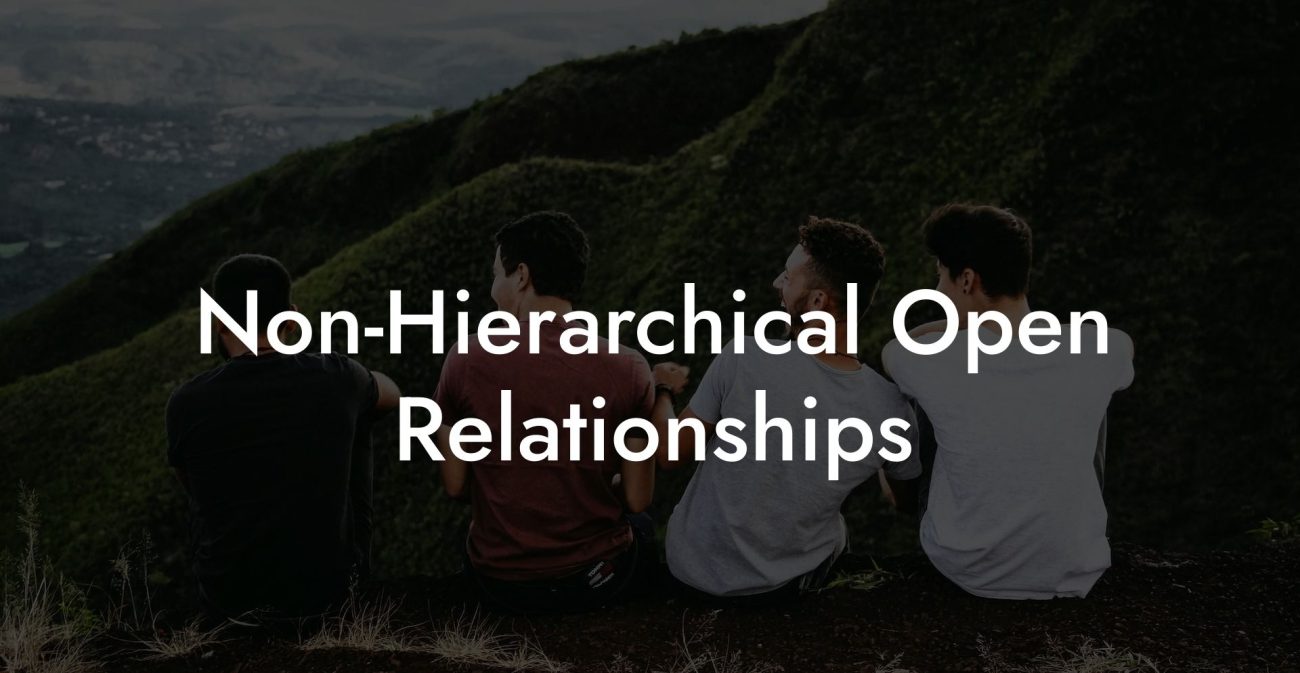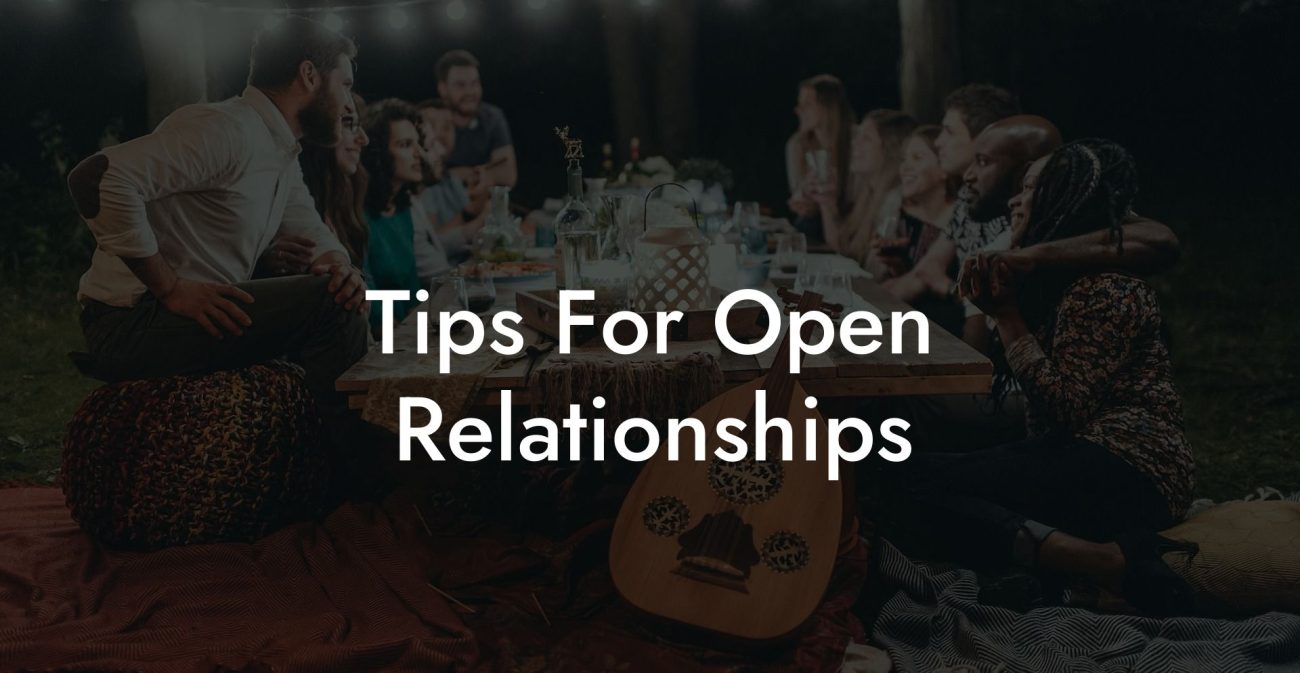Polyamory vs Relationship: Key Differences

Polyamory, a lifestyle that embraces multiple consensual relationships, stands in contrast to conventional (often monogamous) relationships, which typically focus on an exclusive bond between two individuals. In this guide, we break down the core differences in structure, commitment, communication, legal recognition, and emotional dynamics, providing you with the insights you need to understand how polyamory differs from more traditional relationship models.
Quick Links to Useful Sections
- Understanding Conventional Relationships
- Definition and Core Features
- Historical and Cultural Context
- Understanding Polyamorous Relationships
- Definition and Core Principles
- Key Differences Between Polyamorous and Conventional Relationships
- Commitment and Exclusivity
- Structure and Dynamics
- Communication Requirements
- Legal and Social Recognition
- Emotional and Psychological Dynamics
- Benefits and Challenges
- Benefits of Conventional Relationships
- Challenges of Conventional Relationships
- Benefits of Polyamorous Relationships
- Challenges of Polyamorous Relationships
- Practical Strategies for Success
- Self-Reflection and Goal Setting
- Develop Strong Communication Skills
- Establish Clear Boundaries
- Prioritize Self-Care and Build a Support Network
- FAQ: Your Polyamorous vs Monogamous: Key Differences Questions Answered
Understanding Conventional Relationships
Definition and Core Features
A conventional relationship is typically defined as an exclusive, monogamous bond between two individuals. In these relationships, partners commit to sharing their emotional, romantic, and sexual lives exclusively with one another. This model is widely accepted and supported by cultural, religious, and legal institutions.
- Exclusivity: The relationship is based on a commitment to one partner only.
- Long-Term Commitment: Conventional relationships often aim for a lasting or lifelong bond, frequently formalized through marriage.
- Legal and Social Recognition: Monogamous partnerships enjoy established legal rights and social support, including benefits related to marriage.
- Focused Emotional Connection: The emotional and physical intimacy is concentrated on the two individuals, fostering a deep, singular bond.
Historical and Cultural Context
Historically, conventional (monogamous) relationships have been promoted as the ideal through religious teachings and legal frameworks. The nuclear family model, emphasizing a stable, exclusive partnership, has long been reinforced in many cultures as the foundation of society.
Understanding Polyamorous Relationships
Definition and Core Principles
Polyamorous relationships involve engaging in multiple consensual romantic or sexual connections simultaneously. The word "polyamory" comes from the Greek "poly" (many) and the Latin "amor" (love), reflecting the idea that love is abundant and not limited to one person. In polyamory, all partners are aware of and consent to the arrangement, and the emotional bonds can vary in depth and commitment.
- Consensual Non-monogamy: Every relationship is formed with the informed consent of all parties involved.
- Transparent Communication: Open dialogue is essential to negotiate boundaries, share emotions, and manage expectations.
- Flexibility in Structure: Polyamorous arrangements can be hierarchical (with primary and secondary relationships) or non-hierarchical (with all relationships considered equal).
- Emotional Diversity: Individuals benefit from multiple sources of emotional support and varied intimate connections.
Historical and Cultural Context
Although the modern term “polyamory” is relatively recent, the practice of forming multiple romantic connections has historical roots in various cultures. Many indigenous societies and ancient civilizations embraced forms of non-monogamy, and today, polyamory is gaining acceptance, especially in progressive communities that value personal freedom and transparent communication.
Key Differences Between Polyamorous and Conventional Relationships
Commitment and Exclusivity
Conventional Relationships: Focus on a singular, exclusive bond where both partners commit solely to one another.
Polyamorous Relationships: Allow for multiple simultaneous connections. Commitment is distributed among several partners, with the possibility of prioritizing some relationships over others or maintaining all connections on an equal basis.
Structure and Dynamics
Conventional Relationships: Tend to have a straightforward structure with clear roles and responsibilities defined between two people.
Polyamorous Relationships: Are inherently more complex, requiring ongoing negotiation and coordination among all partners. This dynamic offers diverse emotional and practical support but demands advanced communication and boundary-setting skills.
Communication Requirements
Conventional Relationships: Typically involve focused, bilateral communication aimed at deepening a singular emotional bond.
Polyamorous Relationships: Require multi-directional communication among all involved parties to manage varying expectations, negotiate boundaries, and address complex emotions such as jealousy or compersion.
Legal and Social Recognition
Conventional Relationships: Are widely recognized by legal systems and cultural institutions, offering benefits such as marriage rights, inheritance, and spousal benefits.
Polyamorous Relationships: Generally lack formal legal recognition, as legal frameworks are primarily designed to support monogamous marriages. This can lead to challenges in areas like inheritance, custody, and access to benefits, even though polyamorous relationships are fully consensual.
Emotional and Psychological Dynamics
Conventional Relationships: Often create a deep, focused emotional connection between two individuals, which can foster a strong sense of security and trust.
Polyamorous Relationships: Provide a network of diverse emotional support, which can lead to personal growth and resilience. However, managing multiple intimate connections also requires a higher level of emotional intelligence and the ability to balance complex feelings.
Benefits and Challenges
Benefits of Conventional Relationships
- Simplicity and Clarity: With two partners, roles and expectations are typically clear and easier to manage.
- Legal Protections: Monogamous relationships are supported by well-established legal rights and benefits.
- Focused Emotional Intimacy: The exclusive bond can lead to deep trust and security.
Challenges of Conventional Relationships
- Potential for Emotional Stagnation: The exclusive focus on one partner may sometimes limit the diversity of emotional support.
- Pressure to Conform: Societal norms can impose expectations that might not align with individual needs for exploration and growth.
Benefits of Polyamorous Relationships
- Diverse Emotional Support: Multiple relationships can offer a rich variety of care, perspectives, and resources.
- Personal Growth: Navigating complex relationship dynamics fosters improved communication skills, self-awareness, and emotional resilience.
- Flexibility: Polyamory allows individuals to create relationship structures that adapt to their evolving personal and emotional needs.
- Exploration of Intimacy: Engaging with multiple partners can provide opportunities for varied and enriching experiences of love and connection.
Challenges of Polyamorous Relationships
- Complex Emotional Dynamics: Managing multiple intimate connections can lead to challenges such as jealousy and the need for constant negotiation.
- Time and Resource Management: Dividing attention and energy among several partners requires careful planning and balance.
- Legal and Social Limitations: Polyamorous relationships generally lack formal legal recognition and may face social stigma from traditional communities.
Practical Strategies for Success
Self-Reflection and Goal Setting
Begin by reflecting on your personal values and what you seek in a relationship. Consider your needs for exclusivity versus diversity in emotional connections and decide which model aligns best with your lifestyle.
Develop Strong Communication Skills
Effective communication is the cornerstone of any healthy relationship. Whether you are in a conventional or polyamorous relationship, regular check-ins, active listening, and honest discussions about feelings and expectations are crucial.
- Schedule regular conversations to evaluate relationship dynamics.
- Practice active listening and use “I” statements to express your feelings.
- Utilize digital tools such as shared calendars and group chats to coordinate schedules and boundaries.
Establish Clear Boundaries
Clearly defining and regularly revisiting boundaries can help prevent misunderstandings and ensure that all partners’ needs are met. In conventional relationships, boundaries often focus on exclusivity and shared responsibilities, whereas in polyamorous relationships, boundaries need to be negotiated among all partners.
- Create written or digital agreements outlining expectations.
- Revisit these boundaries periodically to ensure they remain effective.
- Ensure that all parties have a voice in setting these limits.
Prioritize Self-Care and Build a Support Network
Taking care of your own well-being is essential for sustaining healthy relationships. Establish routines that promote physical, emotional, and mental well-being, and connect with supportive communities that share your relationship values.
- Engage in activities that recharge you, such as exercise, meditation, or hobbies.
- Consider professional counseling or therapy to enhance emotional resilience.
- Join online forums or local groups that support your relationship model.
FAQ: Your Polyamorous vs Monogamous: Key Differences Questions Answered
1. What is a monogamous relationship?
A monogamous relationship is an exclusive partnership between two individuals who commit to being romantically and sexually involved only with each other.
2. What is a polyamorous relationship?
A polyamorous relationship involves maintaining multiple consensual romantic or sexual connections simultaneously, with open communication and mutual consent.
3. How do commitment levels differ between monogamy and polyamory?
Monogamy emphasizes a singular, exclusive commitment, while polyamory distributes commitment across multiple relationships, each with its own level of significance.
4. What legal differences exist between these models?
Monogamous relationships, especially when formalized through marriage, are legally recognized and provide defined rights and benefits. Polyamorous relationships generally lack formal legal recognition, which can affect issues like inheritance, custody, and spousal benefits.
5. How do communication requirements differ?
Monogamous relationships typically involve focused, bilateral communication, whereas polyamorous relationships require continuous, multi-directional dialogue among all partners to manage boundaries and emotions.
6. What are some emotional differences between these models?
Monogamy tends to create a deep, exclusive emotional bond between two individuals, while polyamory provides a diverse network of emotional support, requiring advanced communication and emotional management skills.
7. Where can I find additional resources on these topics?
Additional resources include books like "The Ethical Slut" by Dossie Easton & Janet Hardy and "More Than Two" by Franklin Veaux & Eve Rickert, podcasts such as "Multiamory" and "Polyamory Weekly," and online communities like r/polyamory.
Resources and Community Support: Your Next Steps
- "The Ethical Slut" by Dossie Easton & Janet Hardy – A foundational text exploring ethical non-monogamy and various relationship models.
- "More Than Two" by Franklin Veaux & Eve Rickert – An in-depth guide offering practical advice on managing relationship dynamics in both monogamous and polyamorous settings.
- Podcasts: Listen to "Multiamory" and "Polyamory Weekly" for engaging discussions and personal experiences regarding diverse relationship models.
- Online Communities: Join forums such as r/polyamory to exchange ideas and receive support.
- Workshops and Webinars: Attend events focused on relationship psychology and ethical non-monogamy to broaden your knowledge and network with like-minded individuals.
By exploring these resources and applying the strategies outlined in this guide, you can develop a clear, informed understanding of the key differences between polyamorous and monogamous relationships. Embrace continuous learning, open communication, and self-reflection as you navigate the diverse landscape of intimacy and commitment.
Lost & confused by all of the terms, types and seemingly made up 3 letter acronyms?? We've got you. Check out our Ethnical Non-Monogamy Dictionary >>
Useful Interruption: Not sure which relationship vibe fits you best? Take our Relationship Test, it’ll give you the real insight into your natural relationship style. Then, dive into our binge-worthy guides (from the tried-and-true to the “wait, that’s a thing?”) and find the perfect relationship type for your life:
- Monogamy
- Open Relationships
- Ethical Non-Monogamy
- Solo Polyamory
- Non-Hierarchical Polyamory
- Hierarchical Polyamory
- Relationship Anarchy
- Swinging
Now back to the main article but yeah take the test...












